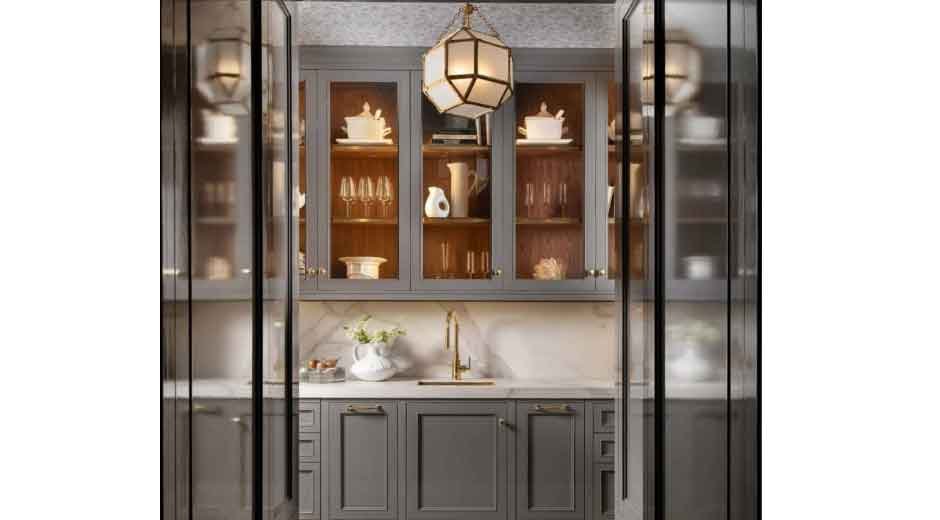Lighting is often the unsung hero of any kitchen or storage space. When it comes to pantries, the right lighting can transform the way you see and access your stored goods. Whether you have a cozy cabinet pantry tucked away behind doors or a spacious walk-in pantry, understanding the differences in lighting needs is essential. In this guide, we’ll explore the nuances of pantry lighting for walk-in versus cabinet pantries, helping you make informed choices for your kitchen setup.
The Importance of Proper Pantry Lighting
Pantry lighting does more than just illuminate a space—it enhances functionality, improves visibility, and even contributes to the overall aesthetics of your kitchen. Imagine reaching for that favorite spice jar or canned good, only to struggle because of shadows or dim lighting. That’s where the right pantry lighting comes into play. Modern solutions, like LED light bulbs, not only provide bright and efficient illumination but also save energy and last significantly longer than traditional incandescent bulbs.
Choosing the right lighting can prevent accidents, reduce frustration, and make your pantry feel like an integrated part of your kitchen rather than a dark, forgotten corner. Whether you’re dealing with a compact cabinet pantry or a larger walk-in pantry, lighting is key to accessibility, organization, and even style.
Cabinet Pantries: Compact and Convenient
Cabinet pantries are often small, enclosed spaces that fit seamlessly into kitchen cabinetry. They are perfect for homes with limited space or for keeping essential items close at hand. While their compact size is convenient, it comes with unique lighting challenges.
Lighting Challenges for Cabinet Pantries
- Limited Space: The small interior often means light sources must be carefully positioned to avoid shadows. A single ceiling fixture might not suffice, especially for deep or tall cabinets.
- Obstructed Visibility: Shelves, pull-out drawers, or stacked containers can block light, leaving corners dim and hard to navigate.
- Accessibility: Since cabinet pantries are enclosed, you might have to open doors to see inside. This creates the need for lighting that activates automatically or illuminates the space when the doors are opened.
Ideal Pantry Lighting for Cabinet Pantries
For cabinet pantries, compact, flexible, and energy-efficient lighting solutions work best. LED light bulbs are a great choice due to their bright output and low heat emission. Popular options include:
- LED Strip Lights: Slim and flexible, they can be installed under shelves or along cabinet edges to provide even illumination without taking up space.
- Puck Lights: Small, round lights that can be recessed or surface-mounted. Ideal for illuminating deep shelves.
- Motion Sensor Lights: Perfect for automatic lighting when pantry doors are opened. This avoids the hassle of switches and ensures your pantry is always well-lit.
The key with cabinet pantries is to distribute light evenly so that every shelf and corner is visible, making it easier to organize items and quickly find what you need.
Walk-In Pantries: Spacious and Versatile
Walk-in pantries, on the other hand, are larger spaces that allow you to step inside and move around. These pantries can accommodate more storage, larger appliances, and even decorative elements. However, their size introduces different lighting considerations.
Lighting Challenges for Walk-In Pantries
- Size and Depth: A single light source may not illuminate the entire space. Shadows can form in corners, on high shelves, or inside deep storage areas.
- Task-Specific Lighting: Larger pantries often have multiple zones—shelves for dry goods, racks for appliances, and even countertop areas for prepping ingredients. Each area may require different lighting.
- Aesthetics: Walk-in pantries are often designed to be more visually appealing. Lighting needs to blend functionality with style, enhancing the overall ambiance of the space.
Ideal Pantry Lighting for Walk-In Pantries
Walk-in pantries benefit from layered lighting approaches. Here’s how to achieve optimal illumination:
- Overhead LED Fixtures: A central ceiling fixture with bright LED light bulbs provides general illumination. Choose LED options with a higher lumen output to cover the larger space.
- Under-Shelf Lighting: Just like cabinet pantries, under-shelf lighting ensures that every shelf is evenly lit, preventing shadows from tall containers or stacked items.
- Recessed Lighting: Recessed lights installed in the ceiling provide unobtrusive illumination. Placed strategically, they can light up key areas like countertops, storage zones, or corners.
- Accent Lighting: For a touch of style, consider LED tape or small spotlights to highlight decorative elements or premium items like glass jars and serving dishes.
Walk-in pantries provide the opportunity to create a well-lit, functional, and aesthetically pleasing space. The flexibility in lighting choices allows you to combine practical and decorative lighting for a polished look.
Comparing Cabinet vs. Walk-In Pantry Lighting
While both types of pantries require functional lighting, the differences are notable:
| Feature | Cabinet Pantry | Walk-In Pantry |
| Space | Compact | Spacious |
| Light Requirements | Focused, compact, often automatic | Layered, multi-zone, task-specific |
| Lighting Options | LED strips, puck lights, motion sensor lights | Overhead fixtures, recessed lights, under-shelf lighting, accent lighting |
| Accessibility | May be harder to see deep corners | Easier to navigate, but larger areas need more coverage |
| Aesthetic Considerations | Functional and subtle | Can be decorative and stylish |
Understanding these differences helps you select the right lighting for your pantry type, ensuring both visibility and design appeal.
Energy Efficiency and Longevity with LED Light Bulbs
Regardless of pantry type, choosing LED light bulbs is a smart decision. LEDs are not only energy-efficient but also produce less heat, which is important for enclosed spaces where heat buildup could affect stored food items. Additionally, LEDs have a longer lifespan compared to traditional incandescent bulbs, reducing the frequency of replacements. They come in a variety of color temperatures, from warm to daylight, allowing you to choose the ambiance that suits your kitchen.
Practical Tips for Optimizing Pantry Lighting
- Measure Your Space: Before selecting lighting, measure the height, depth, and width of your pantry. This helps determine the number of fixtures or strips needed.
- Consider Motion Sensors: Especially useful for cabinet pantries, motion-activated lights reduce energy usage and add convenience.
- Choose Dimmable Options: For walk-in pantries, dimmable LEDs allow you to adjust lighting intensity depending on the task or mood.
- Avoid Glare: Position lights to minimize direct glare in eyes while providing adequate illumination for shelves.
- Plan for Maintenance: Choose lighting that’s easy to replace or clean, especially in a pantry environment where dust or food particles can accumulate.
Final Thoughts
Whether you have a compact cabinet pantry or a spacious walk-in pantry, proper lighting is crucial. Cabinet pantries benefit from compact, efficient, and automated solutions, while walk-in pantries offer more flexibility for layered and decorative lighting. Using LED light bulbs in either scenario ensures bright, energy-efficient, and long-lasting illumination. Investing in the right pantry lighting transforms your pantry from a simple storage space into a functional and visually appealing extension of your kitchen.
The next time you plan your kitchen or upgrade your pantry, remember that lighting isn’t just a luxury—it’s a key element that improves accessibility, organization, and style. From sleek cabinet setups to expansive walk-in layouts, the right lighting can truly illuminate your kitchen life.






